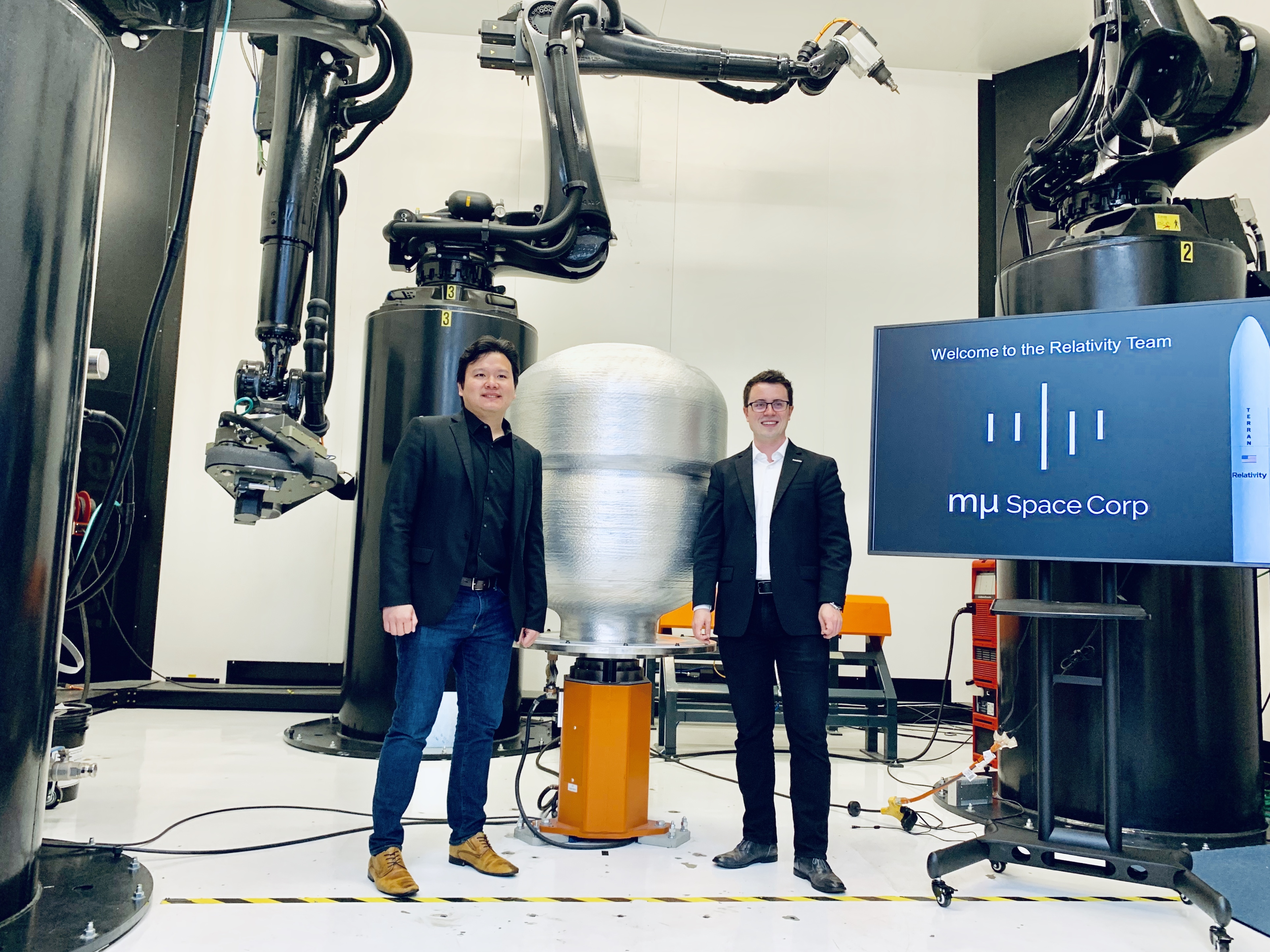Relativity Space to Launch Thai Satellite on 3D-Printed Rocket
Relativity Space says they can 3D-print a rocket in less than 60 days.

The 3D rocket-printing company Relativity announced its second partnership ever, this time with the Thai satellite company mu Space, to launch a satellite into low Earth orbit in about three years.
Los Angeles-based Relativity is a small launch vehicle developer fully funded by venture capital. Investors backing the 3.5-year-old company includes Playground Global, Y Combinator, Social Capital, Mark Cuban and Phillip Spector, who was formerly with Intelsat.
The mu Space satellite would launch in 2022 on what Relativity officials call the first 3D-printed rocket ever built. According to them, this vehicle — Terran 1 — is designed to carry up to 2,756 lbs. (1,250 kilograms) into low Earth orbit, with a cost of $10 million per launch.
Related: NASA Announces $100,000 Winners of Virtual 3D-Printed Mars Habitats
Relativity officials say their Stargate machine is the largest metal 3D printer in the world, with the capacity to transform raw materials into a rocket, like Terran 1, in less than 60 days.
"Stargate is constantly getting smarter and faster by using sensors and reward function-based learning,'' officials state on Relativity's website. ''We are creating an entirely new type of evolvable production line.'' The company aims to disrupt decades of global aerospace manufacturing, according to their recent announcement about the new partnership.
Relativity signed its first contract earlier this month, with the Canadian satellite communications company Telesat.
Get the Space.com Newsletter
Breaking space news, the latest updates on rocket launches, skywatching events and more!
This is just the beginning of Relativity's ambitions. While currently striving to deploy and resupply satellite constellations into orbit around Earth, Relativity is also making bold statements about its future. By scaling rockets quickly, company officials hope to ''build the future of humanity in space,'' according to the website. ''We believe the future of humanity is interplanetary.''
- Meet OSCaR: Tiny Cubesat Would Clean Up Space Junk
- Air-Breathing Rocket Engine Gets Green Light for Major Tests
- SpaceX Recovered Falcon Heavy Nose Cone, Plans to Re-fly it This Year (Photos)
Follow Doris Elin Salazar on Twitter @salazar_elin. Follow us on Twitter @Spacedotcom and on Facebook.
Join our Space Forums to keep talking space on the latest missions, night sky and more! And if you have a news tip, correction or comment, let us know at: community@space.com.

Doris is a science journalist and Space.com contributor. She received a B.A. in Sociology and Communications at Fordham University in New York City. Her first work was published in collaboration with London Mining Network, where her love of science writing was born. Her passion for astronomy started as a kid when she helped her sister build a model solar system in the Bronx. She got her first shot at astronomy writing as a Space.com editorial intern and continues to write about all things cosmic for the website. Doris has also written about microscopic plant life for Scientific American’s website and about whale calls for their print magazine. She has also written about ancient humans for Inverse, with stories ranging from how to recreate Pompeii’s cuisine to how to map the Polynesian expansion through genomics. She currently shares her home with two rabbits. Follow her on twitter at @salazar_elin.









